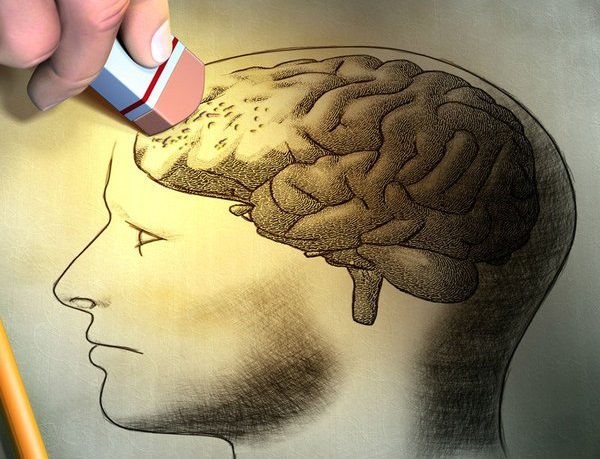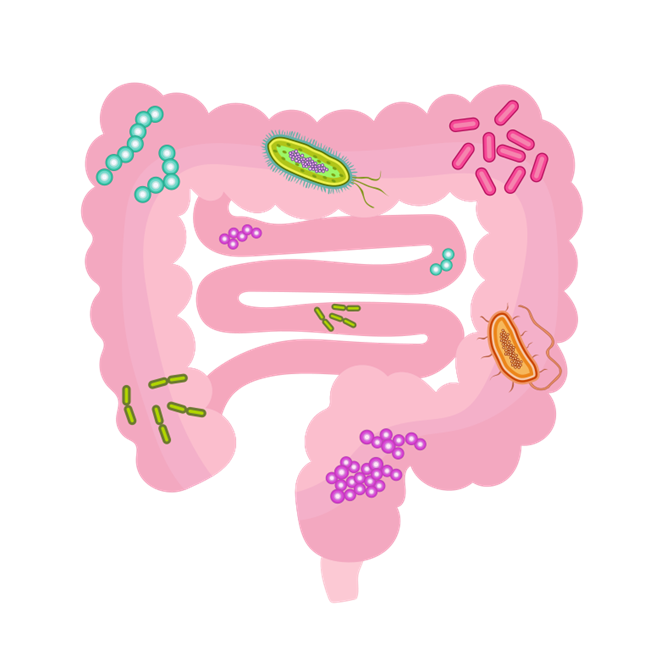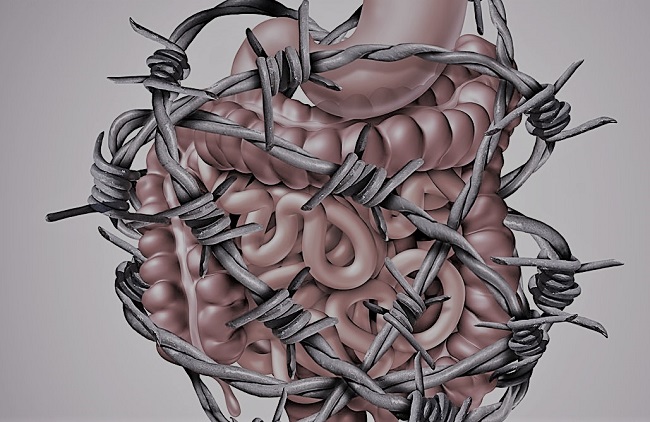While searching through old research files for an article I am writing on mitochondria and hormones, I stumbled upon the presentation notes for my thesis defense. I thought some of our readers might find them interesting. Although, I was not able to find the original PowerPoint presentation, I did find a later presentation that included my thesis and dissertation research, along with the some background information on neuroendocrinology. You can read my thesis here and/or the articles published from that research here and here. I added a few subheadings for readability, but otherwise, the presentation remains unchanged.
Perinatal Mood, Cognition, and Hormones
The purpose of this study was to identify the cognitive and emotional changes associated with pregnancy hormones both during pregnancy and postpartum and to identify early markers for perinatal mood dysfunction.
This research was based upon several physiological presumptions regarding pregnancy and postpartum. Conventional wisdom holds that during pregnancy reproductive hormones increase exponentially to support the pregnancy. It also posits that after delivery those levels decrease rapidly to below normally circulating levels and remain low until breastfeeding ceases and menstruation begins.
Animal research shows that many reproductive hormones are neuroactive and potently modulate numerous neurotransmitters systems. Given the large and sustained increased in such hormones followed by the precipitous decline, one would expect clear behavioral changes associated both with the elevated and diminished states of circulating hormones. We would also expect that the change from high hormone to low hormone state would mimic an addiction/withdrawal syndrome.
Numerous animal studies indicated that this was the case, but the connection between hormones and behavior in human studies was inconsistent and inconclusive for many reasons outlined in my research. The most important failing of previous research has been the lack of theory or evidence-based design. That is, not only has previous research failed to recognize, and hence, postulate neurosteroid/neurotransmitter mediated behaviors, but often failed to recognize the clearly articulated affective dysregulation presented regularly in clinical case research.
The question of which hormones modulate which neurotransmitters and to what behavioral consequences has not been asked, nor has the possibility that perinatal mood might be altered across several domains ever been addressed. Instead, most if not all, research focuses exclusively on progesterone and estradiol without so much as even speculating which neural circuits might be involved. Moreover, despite ample clinical evidence to the contrary, most research thus far measured and continues to measure only anhedonic depressive symptoms.
This study was different. Because extensive clinical case research revealed that perinatal mood was more often than not comprised of multiple syndromes of which depression was merely a part, I expanded the psychiatric domains measured to include assessment of 9 common psychiatric modalities and utilized a standardized and validated measure.
Additionally, previous studies measured only progesterone and/or estradiol. This study measured five hormones, progesterone, DHEAS, estrone, estradiol, estriol and testosterone. The timing of assessment in other studies has been inconsistent and again not obviously evidence based. With approximately, 70% of all cases of postpartum psychosis occurring in first two weeks post-delivery, I thought it was important to measure within that time frame to capture those changes. Since case reports reveal premorbid symptoms during late pregnancy, I also measured at 37 weeks of pregnancy.
This study utilized salivary assays to measure hormone levels and controlled time of day and food intake. All previous studies measured hormones at non-standardized times and did not control food intake. Hormones have diurnal rhythms, and food intake, particularly with salivary assays will comprise results.
But perhaps the most important difference between this and previous studies is that this study was designed, all instruments were selected and the timing of testing was determined, based upon the presumed neuromodulatory activity of these hormones and the predicted concomitant behaviors associated therein, using an addiction/withdrawal framework. Thus it was imperative to test in the immediate postpartum so as to capture changes before neurological and behavioral adaptation occur.
It’s All About GABA
Given these considerations, much of the study design was based upon progesterone’s capacity to modulate the GABA system.
Progesterone is a potent allosteric GABAa agonist and anxiolytic. However, chronically elevated progesterone becomes anxiogenic via its actions on receptor conformation. It was postulated that during the course of pregnancy, the women would be the beneficiaries of the progesterone’s anxiolytic actions, but that towards the end of the pregnancy, as receptor conformation changed, the GABAa receptor would become immune not only to progesterone’s actions but GABA’s actions as well with the net behavioral effect of increased anxiety.
Postpartum, when progesterone was withdrawn the lack of CNS GABA transmission would induce hyper-excitability across several CNS systems that would be expressed in elevated anxiety symptoms and mood lability.
Major Findings: It’s Not Progesterone or Estradiol and It’s Not Depression
What I didn’t know going into this study was that DHEAS also modulated GABAa but did so antagonistically. What I also didn’t know, and what is in fact the first major finding of this study, was that circulating DHEAS levels increased throughout pregnancy and postpartum. All previous research indicated that DHEAS increased over the first two trimesters, decreased during the third and returned to normal immediately proceeding delivery. This was not the case. Although I have only two test times, DHEAS levels were clearly very high at 37 weeks, and increased postpartum by an average of 34%. Indeed only 6 participants showed waning postpartum DHEAS levels.
Returning to the GABA hypothesis, as is now becoming clear, during most of the pregnancy progesterone positively modulates GABA transmission. Toward the end of pregnancy when progesterone levels presumably level off but are nonetheless at supra-physiological levels, the chronicity of exposure elicits conformational changes in the receptor making it unresponsive to progesterone and according to animal research unresponsive to benzodiazepines as well. Concurrently, DHEAS levels are increasing and are now blocking whatever limited GABA transmission exists. Parturition occurs, progesterone levels diminish by some 93% while DHEAS levels continue to increase. So now whatever remaining GABA binding sites are still available become blocked and CNS hyper-excitability ensues leading to the behavioral lability seen in almost all women during the first two weeks postpartum.
The behavioral sequelae of these rather dramatic physiological changes include increased anxiety, phobia, OCD, paranoia psychoticism, and importantly many physiological symptoms tapped by the somatization scale of the SCL-90R, particularly cardiovascular dysregulation, increased heart rate, respiration, sweating, etc.
Postpartum, even in asymptomatic women, that is the 80% of women who experience what is imprecisely called “baby-blues” is often marked by hyper-excitability and mood lability as much or more so that anhedonia and depression. This is with good reason given the neurochemical and physiological changes occurring as these hormones adapt to the non-pregnant state.
Thus, the second major finding in this study was that although depression was certainly present, it was by no means the sole determinant and I would argue not even the primary or causative factor in the observed mood dysregulation postpartum. This is really important because insofar as previous and indeed current research continues to focus on postpartum depression rather than perinatal mood more broadly, hundreds of thousands of women get misdiagnosed, under-diagnosed and inappropriately treated. The findings from this study indicate that not only do negative mood symptoms begin in late pregnancy but that the disorder itself is characterized as much by anxiety or positive type symptoms as it is by depressive and anhedonic type symptoms.
The third major finding of this study was the connection between late pregnancy and post-delivery hormones to negative mood. As was outlined in my research, the design of this study was very strongly based upon the neuromodulatory capacity of progesterone on the GABAa system. Results from this research indicate that progesterone was not correlated with negative mood and thus I was wrong about progesterone. Nevertheless, I was correct about GABA being a major player in perinatal mood dysregulation.
Recent research suggests that DHEAS is a potent GABAa antagonist similar to the drug picrotoxin. That is, it is capable of binding to a site deep within the receptor, thereby limiting GABA influx.
Given DHEAS’ influence on GABA, its increase late pregnancy and post-delivery, one would expect clear and consistent correlations between DHEAS levels and mood. That is exactly what I found. Pre-delivery DHEAS was correlated with paranoia and psychoticism.
Post delivery DHEAS was strongly and significantly correlated with just about every mood symptom measured by the SCL-90R including anxiety, phobia, paranoia, somatization, and the GSI. Recall that DHEAS levels increased an average of 34% and increased for all but of 6 of the women postpartum. In some women, those who had the most severe postpartum difficulties, DHEAS levels increased 2-4X pre-delivery levels.
Moreover, the fourth major finding from this research showed that pre-delivery testosterone was correlated not only with pre-delivery negative mood (phobia, psychoticism, somatization and GSI), but was correlated strongly and significantly with almost every negative mood symptom measured by the SCL-90R post-delivery as well, including anxiety, hostility, psychoticism, somatization, OCD, interpersonal sensitivity, depression and GS. And the correlation was negative. That means that diminished testosterone (amidst the presumably elevated levels of pregnancy) were correlated with increased negative symptoms. This is important for a number of reasons, not the least of which is its predictive possibilities, but it suggests that the adrenal androgens of which DHEAS and testosterone are key component are implicated in perinatal mood.
This is groundbreaking. It has never been addressed before in the literature. If we look at the biosynthesis of steroid hormones during pregnancy, we see that DHEAS is produced both by the fetal and maternal adrenals and is intra-converted in the placenta as well. Biologically, DHEAS is considered inactive, meaning that it must be converted to DHEA before other downstream hormones can be metabolized. DHEAS is storage component for DHEA. If more DHEA is converted to DHEAS, for whatever reason, then less downstream hormones-testosterone are synthesized. These are the results I found. Since I didn’t measure DHEA, I can only speculate, but these two factors in hormone synthesis appear to be altered and these alterations are related to the mood perinatal mood dysfunction. Future studies are needed to confirm these findings and determine their etiology but preliminarily these results open up an entirely different direction for future research that has yet to be addressed, the implications of which will be far-reaching.
Perinatal Cognitive Changes
The cognitive results from this study were no less impressive but not as easily interpreted because cognitive ability was not consistently linked to either mood or hormone data but was obviously impaired.
As a group, these women were educated with many having graduate degrees. The average estimated IQ was approximately 1 SD above the mean and might have been higher if complete testing had been performed. Most of these women worked outside the home in a professional capacity for the duration of their pregnancies, and yet when tested, showed significant memory and executive function deficits when compared to age and education matched normative data. The degree of impairment was striking, and quite frankly, unexpected.
In verbal memory measured by the CVLT-II, many percentile rankings were below the 20th percentile. When testing these women, it became apparent how important semantic memory was, with those women recognizing the categories of words having little difficulty completing the task and probably skewing the data somewhat. However, for a large percentage of the women, there was absolutely no recognition of the categories inherent in the task and their ability to recall even a fraction of the words was hindered tremendously. The women also repeated words, in some cases 2 and 3 times during the course of a trial and recalled words that were not part the trial list.
On spatial memory tasks the deficits were no less obvious. As is exemplified by the CFT tasks, shown in the appendix of my thesis, the impairment was at least in part related to an inability to see the drawing as an entirety. If we look at these drawings closely, we see that in the copy phase, the core of the drawing, the rectangle is missing. That is, each section of the figure is drawn separately. This presents difficulties in encoding that will ultimately limit performance of the recall portion of the task. Again notice the piece meal quality of the figures in the recall task, with large portions of the figure completely missing. The examples illustrated here are representative of performance across participants.
The mood to cognition relationship was interesting if not paradoxical. Conventional wisdom would suggests that negative mood, particularly depression and anxiety would impair cognitive performance. This was not the case. Indeed depression actually improved performance.
The hormones to cognition relationships were no less confusing except that changes in DHEAS were correlated with poorer performance on the CVLT-II. Given the magnitude and direction of change in DHEAS levels this was consistent with the earlier results. Progesterone, was not correlated with mood symptoms but was correlated to both aspects of the design fluency task and the estrogens were correlated with a variety of task both pre and postpartum.
What was particularly interesting about this aspect of the research was that cognitive ability declined in many areas postpartum, but participants perceived themselves as having improved. The disconnect between perception and performance was clear almost across the board.
Finally, it may be that as in the case of other mental illnesses, cognitive functioning is not correlated with severity of symptoms but is associated with measures of therapeutic outcome such that higher premorbid functioning predicts one’s ability to function during and after an episode.
This possibility begs the question that if another group of women was tested having lower premorbid cognitive function and lower socio-economic status, would they have fared as well as the women in this study. That is, would their ability to withstand the physiological and consequent emotional/behavioral change associated with pregnancy and postpartum be comparable to the abilities of this group?
We Need Your Help
More people than ever are reading Hormones Matter, a testament to the need for independent voices in health and medicine. We are not funded and accept limited advertising. Unlike many health sites, we don’t force you to purchase a subscription. We believe health information should be open to all. If you read Hormones Matter and like it, please help support it. Contribute now.
Yes, I would like to support Hormones Matter.
The studies addressed here were published in 2007 as part of my PhD dissertation. This post was published on HM on November 29, 2018.










